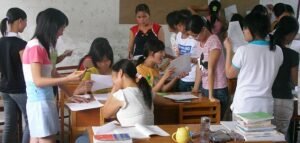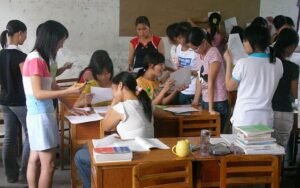If you\’ve ever moved to a new city, you know the feeling of starting over. Creating new routines and finding new connections are a normal part of adjusting to a new place. However, for someone learning English, making those connections can take much longer and be much more difficult to access or understand. Your students may not know what\’s available in the community, from services to events to public recreation. How can you help connect your students to their new communities?
- Bring in guest speakers. When it\’s relevant to a topic in your class, invite a service provider (e.g., counselor, librarian, adult educator) from the community to come and briefly share with your students what that person does and how your students can access those services. Give your speaker advance notice of your students\’ language level and ask him or her to speak slowly and simply. If you have a low-level class, try to have an interpreter, if possible.
- Attend community events together. Does your community have a Christmas parade, an international festival, or a 4th of July fireworks show? Celebrate with your students! They will enjoy being part of a community event and might be surprised to learn how many free or low-cost activities they can attend. If you\’re unsure when these events are held, check your local newspaper or regional tourism agency website.
- Integrate community information into your lessons. Are your students learning direction words? Bring a map of walking trails in your area. Are you practicing reading informational texts? Read about the local library\’s services. Using real items will help your students make connections to their prior knowledge of the community, get real-world practice in understanding texts they see every day, and actually be able to use what they learn.
- Listen to their needs. Your students will likely have needs that are different from yours. They may be figuring out the bus system, while you drive everywhere. They might use services from the local Health Department, while you tend to call your family doctor. As you listen to your students\’ needs, take the time to help them find answers. Sometimes, they just need to know where to go or who to ask. Other times, they might need help getting through a phone menu in order to ask for an interpreter. Be available and ready to do a little digging.
Making community connections is a valuable way to love your students and help them feel at home in a new place. How can you connect your students to a local resource through your next lesson?
Rachael Tsaneva is an instructor at the Institute for Cross-Cultural Training (ICCT). For more information, or to sign up for a class, visit ICCT’s website.





